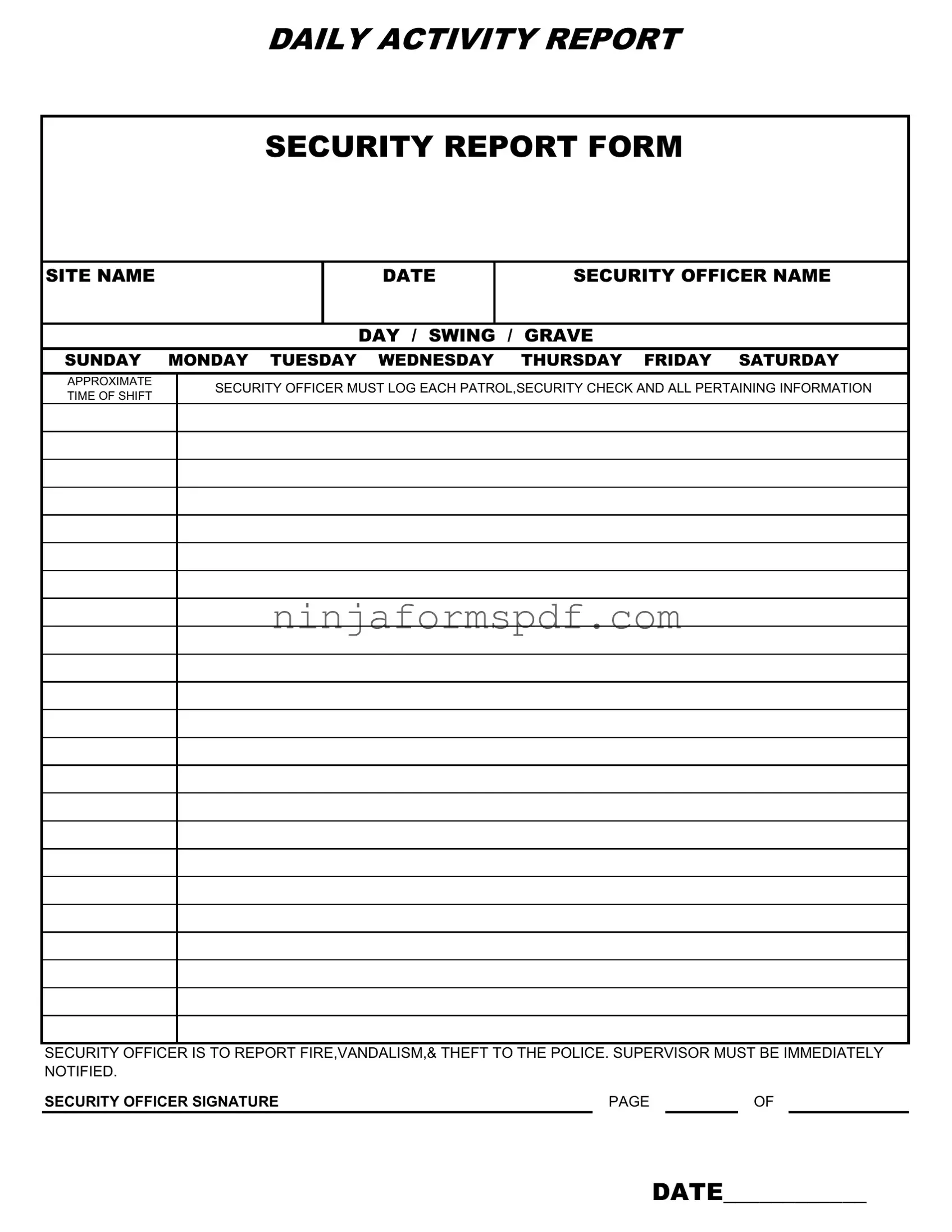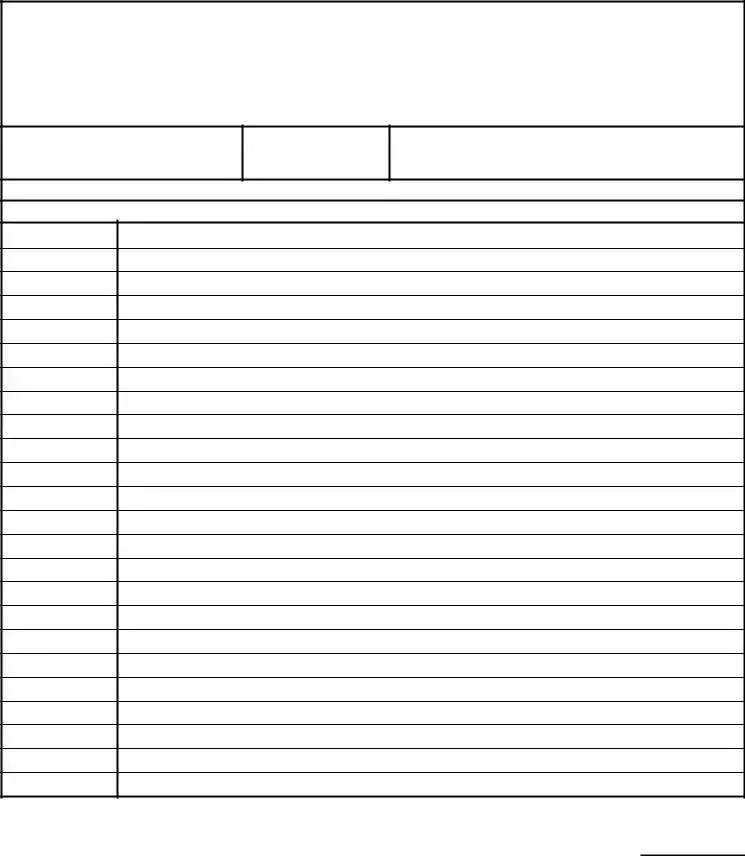The Incident Report Form commonly used in workplaces or public settings shares notable similarities with the Security Guard Daily Report Sample. Like the Daily Report, the Incident Report documents specific occurrences within a specified timeframe, detailing accidents, injuries, or any unusual incidents. The key purpose of both documents is to ensure accountability and provide a factual basis for any necessary follow-up actions, further emphasizing their roles in maintaining safety and security protocols.
A Police Report, while broader in scope and application, echoes the Security Guard Daily Report in its objective to meticulously record events. Police Reports capture details of crimes, disturbances, and other incidents requiring law enforcement attention. Both forms serve as critical tools in investigations and legal proceedings, offering a structured way to document occurrences for future reference, analysis, or evidence.
Maintenance Request Forms, used within various facilities to report equipment or infrastructure issues, parallel the Security Guard Daily Report in their fundamental function of reporting. Though their focuses diverge — with Maintenance Requests centering on building upkeep and the Daily Report on security incidents — both contribute to the overarching goal of ensuring a safe and functional environment by cataloging concerns needing attention.
The Visitor Log is another document bearing resemblance to the Security Guard Daily Report, mainly through its record-keeping aspect. These logs track the entry and exit of visitors, including details like name, time, and purpose of visit, similar to how security incidents and patrols are logged by security personnel. Both documents play vital roles in enhancing accountability and safety of premises by maintaining transparent records.
Shift Handover Reports are utilized in various industries to ensure smooth transitions between shifts, much like how the Security Guard Daily Report outlines activities and incidents of particular shifts. The core aim is to communicate essential information to succeeding personnel, ensuring continuity and awareness of ongoing issues or tasks, illustrating their shared emphasis on operational consistency and awareness.
A Task List or To-Do List for security officers can resemble the Security Guard Daily Report in structure and intent. While the Daily Report records events and activities that have occurred, a Task List outlines anticipated duties or checks to be completed during a shift. Both documents guide the security officer’s activities, ensuring they cover all necessary ground, from planned tasks to unexpected incidents requiring documentation.
An Emergency Action Plan Document, crucial for outlining procedures in response to emergencies, intersects with the Security Guard Daily Report through its focus on safety and protocol adherence. The Daily Report can include instances of emergency response, serving as a real-time counterpart to the theoretical scenarios and guidelines laid out in an Emergency Action Plan, underlining the importance of preparedness and accurate reporting.
Quality Control Checklists used in manufacturing or service industries to ensure products or services meet specified standards also share common ground with the Security Guard Daily Report. Both forms are tools for inspection and verification, although they inspect different aspects — one focuses on security patrols and incidents, while the other targets product quality and process adherence. Nevertheless, their unified objective is to maintain high standards through rigorous documentation.
The Hourly Check-In Report, specific to certain security or caregiving roles, mirrors the Security Guard Daily Report in its interval-based recording approach. This report, typically concise, ensures individuals or assets are monitored at regular intervals, closely aligning with the security report’s emphasis on documenting patrols and checks to ensure continuous oversight and security throughout a designated period.
Finally, the Equipment Inspection Forms, which are pivotal in verifying the safety and operational status of machinery or vehicles, relate to the Security Guard Daily Report through their shared focus on preventative measures and safety. By documenting inspections, malfunctions, or compliance with safety standards, these forms, alongside the security report, contribute significantly to the overall well-being and security of the operational environment.

